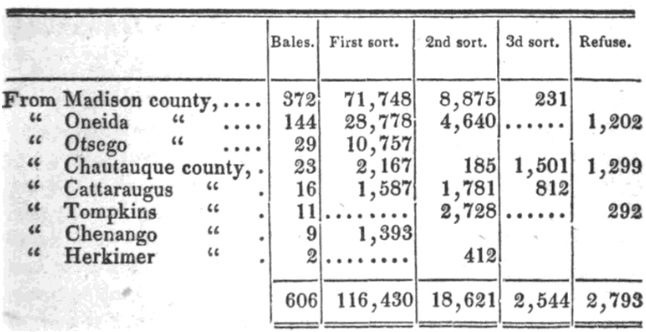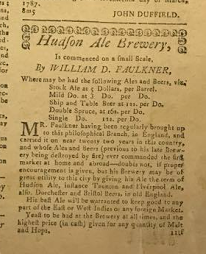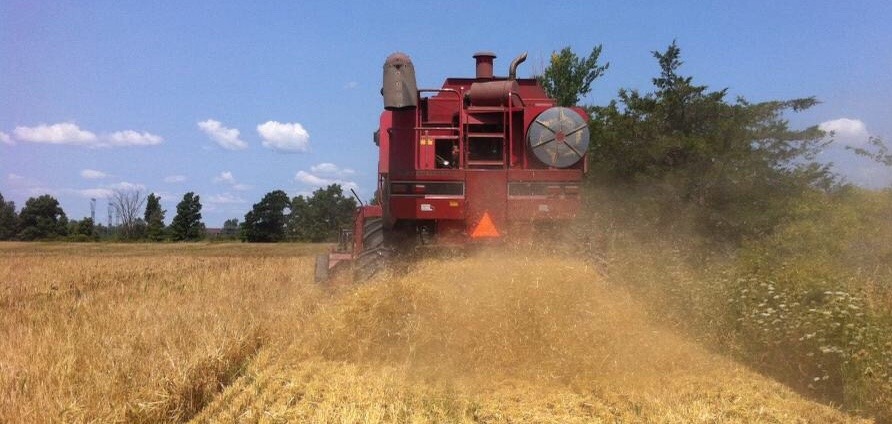The other night I had my nose deep into a bag of Canada Red Vine hops, a variety revived in Tavistock, Ontario. The scene was Folly Brewpub in Toronto and the bag was care of Jordan who had picked it up at The Tavistock Hop Company. The fact that some of the bag of hops exists at all is pretty neato as this news item explains.
Wynette dug up some rootstalks, called rhizomes, on the banks of the Speed River. He grew a new generation of plants on his farm in Tavistock. He took cuttings from those plants, and soon had enough for a small crop. “So now in Tavistock we grow these same hops cloned off 100-plus-year-old plants,” Wynette said. Based on a chemical analysis of the plant, Wynette believes he cloned a type of hops called Canadian Red Vine.
My nose was pleased but my mind was racing. I had heard of this reintroduction a few days before and had asked Stan about it. His tweet in reply was succinct: “Grown in US NW into the 1970s. Origin of name unknown.” Hmm. I don’t like unknown. Someone once told me that the history James Pritchard, Loyalist, was unknown. Nope.
So, being that way, I started to look around and found this reference in the Documents of the Senate of the, 139th Session, 1916 which, as you know, contains the 34th Annual Report of the New York Agricultural Experiment Station located at Geneva, Ontario County. The 34th year was 1915. I found this in a passage about mildew:
That there are other influences which affect the growth of the mildew is very apparent. Yards near enough together to be equally affected by periods of wet weather frequently show great differences in severity of mildew attacks though new spots may appear in both at the same time. Different varieties and even different leaves on the same plant vary in susceptibility. Named in order of susceptibility beginning with the most susceptible, the New York varieties would be arranged as follows: Canada red vine, English cluster, Humphrey and native red vine. No serious injury has been noticed, so far, on the native red vine variety though planted near badly infested yards and, in some instances, scattered through yards of a susceptible variety. It is said to be a light yielder, however.
Not a lot of references to Canada Red Vine out there on the internets and this one describes it as a New York Variety. Things get a bit weird in terms of naming conventions around the east end of Lake Ontario. Notice above there that Geneva, New York is located in Ontario County. In 2009, I wrote about running into a pal at a gas station north of Utica. It was right where route 12 meets route 28 – near West Canada Creek, NY. Country well known by Sir William Johnson in the 1750s and well known to his son Sir John Johnson in the 1770s and 1780s during the American Revolution as a Loyalist military force escape route back north. It was called that because it was the way to Canada… aka New France… aka Quebec.
Here’s a thought. People take what this like with them when they move. If that is correct, a third generation of US northwest farmers may well have still be growing the hops their settler great-great-grandparents carried with them to the West. The grandparents of those settlers may have dug up the rhizomes in central New York as they started the family’s trek west after the Erie Canal opened up in the 1820s. And some of their cousins may have had other plans and shifted north into what was then Upper Canada. Many did, euphemistically now called Late Loyalists. And they may have carried the rhizomes with them to Tavistock, Ontario and rammed them into the banks of streams.
Tracing hop lineage is difficult. Consider this observation from William Blanchard Jr. published in the 13 September 1823 edition of The New England Farmer:
The Hop is a native plant. It is found growing spontaneously on the banks and intervales of many of our large rivers. There are several distinct species, all bearing a near affinity to each other; (I have noticed five.) At present they are cultivated together, promiscuously; no preference having been given to any particular one of them by the brewer. But I am of the opinion that there is an essential difference in their qualities—that one may be the best for pale ale; another for strong beer; and a third for porter; and I presume, ere long, particular attention will be paid to ascertain their different qualities.
I love at least two things in that passage. Obviously, the foreshadowing of the use of specific hops for specific beers. And also the fact that only 92 years stand between Mr. Blanchard’s letter to the paper and the Report of the New York Agricultural Experiment Station mentioned above. [And the river banks. Fine. Three.] I expect that the noticing of five distinct species of hops had advanced, through the application of science, some way in those years. Yet – in the 1860s, only a few sorts are propagated in central New York, including Pompey and Cluster. And of the New York varieties identified in 1915 only four are named: Canada red vine, English cluster, Humphrey and native red vine.
Are all three instances of Canada red vine the one variety? Is it one of the five one could spot in a promiscuously planted patch? How can I figure that out?







 This month’s edition of The Session finds us being asked by
This month’s edition of The Session finds us being asked by 